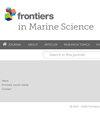Investigating the endocrine disruption effects of four disinfection byproducts on zebrafish estrogen receptor-α
IF 3
2区 生物学
Q1 MARINE & FRESHWATER BIOLOGY
引用次数: 0
Abstract
Reports have shown an increase in the use of disinfectants in wastewater treatment plants, prompted by the detection of residual viruses in sewage. However, the release of disinfection byproducts (DBPs) in final effluents has raised concerns about their potential adverse effects, such as endocrine disruption, on aquatic environments. Despite these concerns, few studies have examined the endocrine-disrupting effects of DBPs on fish, which may be vulnerable to DBPs. The aim of this case study was to investigate the endocrine-disrupting properties of four commonly formed DBPs: chloroiodomethane (CIM), dibromochloromethane (DBCM), bromodichloromethane (BDCM), and trichloroacetic acid (TCA) on the estrogen receptor-α in zebrafish (zERα). The results indicated that all four DBPs have high anti-estrogenic activity against zERα; with CIM, BDCM, DBCM, and TCA yielding 80.8%, 78.4%, 49.0%, and 64.1% anti-estrogenic effects on zERα, respectively. Moreover, all DBPs demonstrated negligible estrogenic effects on zERα. Our study sheds new light on the adverse effects of DBPs, particularly the endocrine-disrupting activity of CIM, which, as part of the dihalomethanes group, has received limited research attention in the past. This study shows the molecular interactions in terms of the endocrine disruption of DBP on zERα, warranting further studies to understand the overall impact of fish in affected aquatic ecosystems.研究四种消毒副产品对斑马鱼雌激素受体-α的内分泌干扰效应
有报告显示,由于在污水中检测到残留病毒,污水处理厂对消毒剂的使用有所增加。然而,最终污水中释放的消毒副产物(DBPs)引起了人们对其潜在不良影响的担忧,如对水生环境的内分泌干扰。尽管存在这些担忧,但很少有研究探讨 DBPs 对鱼类的内分泌干扰作用,而鱼类可能很容易受到 DBPs 的影响。本案例研究旨在调查四种常见的 DBPs:氯碘甲烷(CIM)、二溴氯甲烷(DBCM)、溴二氯甲烷(BDCM)和三氯乙酸(TCA)对斑马鱼(zERα)雌激素受体-α的内分泌干扰特性。结果表明,所有四种 DBPs 对zERα 都具有很高的抗雌激素活性;其中 CIM、BDCM、DBCM 和 TCA 对zERα 的抗雌激素作用分别为 80.8%、78.4%、49.0% 和 64.1%。此外,所有 DBP 对zERα的雌激素作用都微乎其微。我们的研究揭示了 DBPs 的不良影响,尤其是 CIM 的内分泌干扰活性。这项研究显示了 DBP 干扰zERα内分泌方面的分子相互作用,值得进一步研究,以了解受影响水生生态系统中鱼类的整体影响。
本文章由计算机程序翻译,如有差异,请以英文原文为准。
求助全文
约1分钟内获得全文
求助全文
来源期刊

Frontiers in Marine Science
Agricultural and Biological Sciences-Aquatic Science
CiteScore
5.10
自引率
16.20%
发文量
2443
审稿时长
14 weeks
期刊介绍:
Frontiers in Marine Science publishes rigorously peer-reviewed research that advances our understanding of all aspects of the environment, biology, ecosystem functioning and human interactions with the oceans. Field Chief Editor Carlos M. Duarte at King Abdullah University of Science and Technology Thuwal is supported by an outstanding Editorial Board of international researchers. This multidisciplinary open-access journal is at the forefront of disseminating and communicating scientific knowledge and impactful discoveries to researchers, academics, policy makers and the public worldwide.
With the human population predicted to reach 9 billion people by 2050, it is clear that traditional land resources will not suffice to meet the demand for food or energy, required to support high-quality livelihoods. As a result, the oceans are emerging as a source of untapped assets, with new innovative industries, such as aquaculture, marine biotechnology, marine energy and deep-sea mining growing rapidly under a new era characterized by rapid growth of a blue, ocean-based economy. The sustainability of the blue economy is closely dependent on our knowledge about how to mitigate the impacts of the multiple pressures on the ocean ecosystem associated with the increased scale and diversification of industry operations in the ocean and global human pressures on the environment. Therefore, Frontiers in Marine Science particularly welcomes the communication of research outcomes addressing ocean-based solutions for the emerging challenges, including improved forecasting and observational capacities, understanding biodiversity and ecosystem problems, locally and globally, effective management strategies to maintain ocean health, and an improved capacity to sustainably derive resources from the oceans.
 求助内容:
求助内容: 应助结果提醒方式:
应助结果提醒方式:


